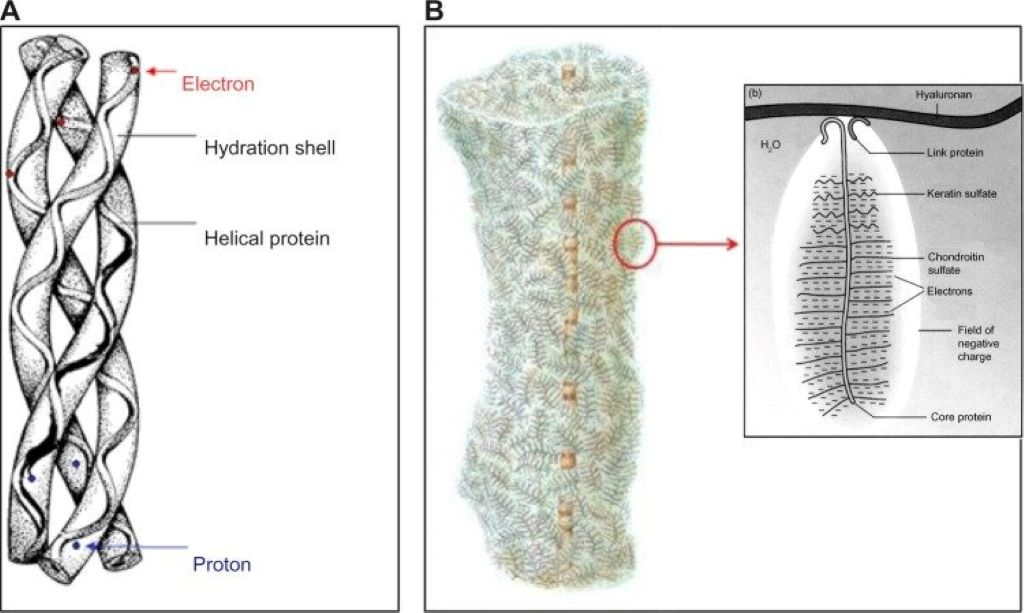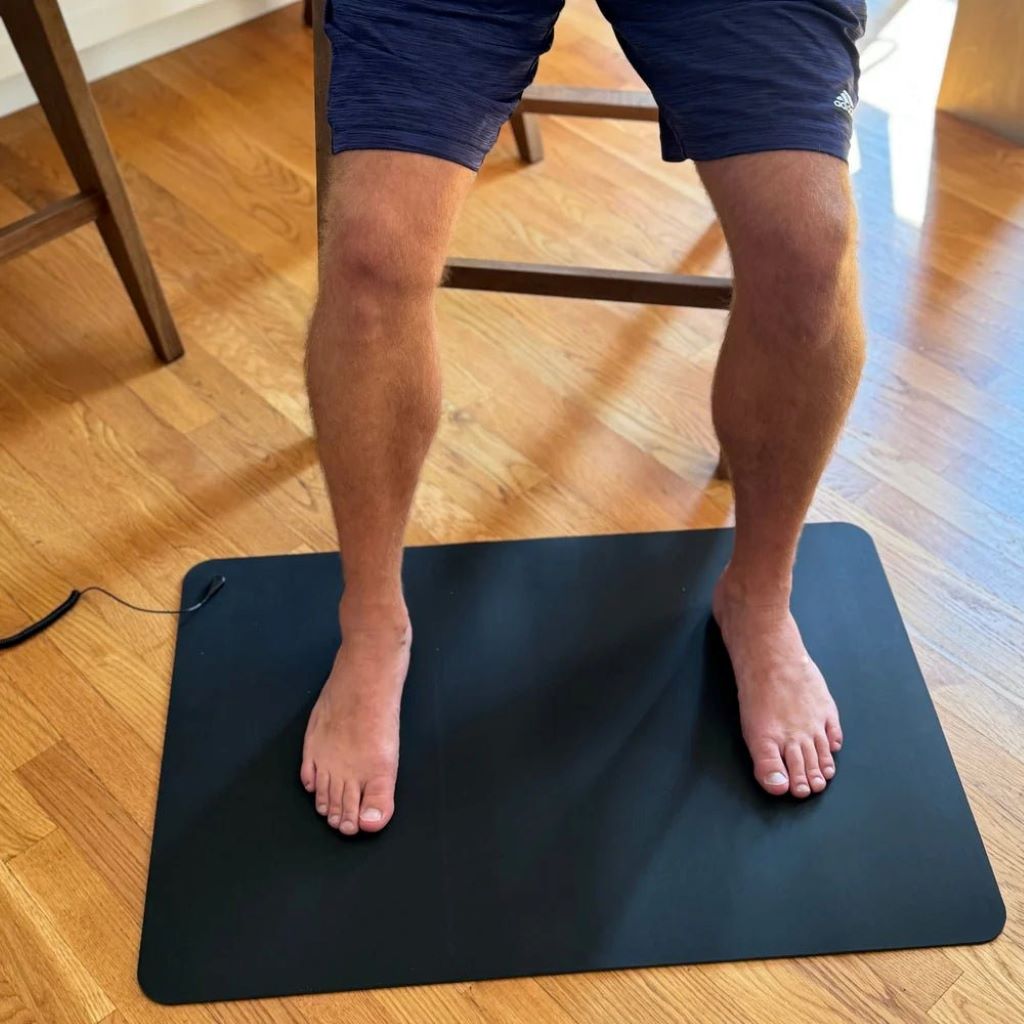After a strenuous workout, the feeling of accomplishment is often followed by the familiar ache of sore muscles. This discomfort, known as Delayed Onset Muscle Soreness (DOMS), is a direct result of microscopic tears in your muscle fibers and the body’s subsequent inflammatory response. For athletes and fitness enthusiasts, managing this inflammation is key to faster recovery and consistent performance. While ice baths, foam rollers, and supplements are common tools, a simpler, more passive approach is gaining attention. As wellness conversations on platforms like Health Define continue to evolve, many are turning to the ancient concept of earthing, made modern and accessible through the grounding mat.
The idea behind grounding, or earthing, is elegantly simple: it involves reconnecting your body to the Earth’s subtle, natural electrical charge. For most of human history, this connection was constant. We walked barefoot and slept on the ground. Today, however, our rubber-soled shoes and insulated homes have disconnected us from this fundamental energy source. Grounding mats are designed to re-establish this link from the comfort of your home. The growing interest in this technology centers on its potential to influence the body’s internal electrical environment, with many users and preliminary studies investigating how a grounding mat inflammation connection could be the key to natural relief.
The theory suggests that the Earth’s surface is rich in free electrons. When you make direct contact with the ground, these electrons can be transferred to your body. Inside the body, inflammation is often linked to an excess of free radicals, which are unstable molecules that damage cells. Since free radicals carry a positive charge, the negatively charged electrons from the Earth may act as powerful antioxidants, neutralizing the free radicals and thereby calming the inflammatory process. Therefore, a grounding mat simply mimics the act of walking barefoot on the grass or beach by using a conductive material connected via a wire to the ground port of an electrical outlet.
Understanding How Inflammation Affects Muscle Recovery
To appreciate how grounding might help, it is important to first understand inflammation’s role in recovery. When you exercise, especially during resistance training or high-intensity activities, you create tiny tears in your muscle fibers. This is a normal and necessary part of getting stronger.
In response to this damage, your body initiates an acute inflammatory response. Immune cells rush to the site to clear out damaged tissue and begin the repair process. This process is what causes the signature pain, swelling, and stiffness of DOMS. While this initial inflammation is beneficial and essential for healing, problems arise when it becomes excessive or chronic.
If the inflammatory response is too strong or lasts too long, it can actually hinder recovery. It can increase pain, prolong soreness, and slow down the muscle-rebuilding process. For an athlete, this means more downtime between training sessions and a potential decrease in performance. The goal of any effective recovery strategy is not to eliminate inflammation entirely, but to manage it effectively so the body can repair itself efficiently.
The Grounding Mat’s Role in Taming Post-Workout Inflammation
This is where grounding mats enter the picture. By supplying the body with a surplus of free electrons, they may help to balance the inflammatory response at a cellular level. After a workout, your muscles are flooded with free radicals as a byproduct of metabolic stress and tissue damage.
By resting on a grounding mat, you provide your body with the antioxidant power it needs to neutralize these free radicals directly at the source. This could lead to several tangible benefits for muscle recovery:
- Reduced Soreness and Pain: By moderating the inflammatory cascade, grounding may lessen the intensity and duration of DOMS. Users often report feeling less stiff and sore the day after a tough workout.
- Faster Tissue Repair: Uncontrolled inflammation can create a hostile environment for cellular repair. By reducing oxidative stress from free radicals, grounding may create a more optimal environment for muscle fibers to heal and rebuild.
- Decreased Swelling: The influx of immune cells and fluid to damaged muscles causes swelling. Grounding’s potential anti-inflammatory effect could help to reduce this buildup, promoting better circulation in the affected area.
While research is still emerging, several studies have shown promising results. For instance, some studies using medical infrared imaging have shown a reduction in red-hot inflammatory markers in subjects after grounding sessions. Additionally, anecdotal evidence from athletes across various disciplines continues to highlight its perceived benefits for recovery.

Beyond Inflammation: Additional Recovery Benefits of Grounding
The positive impact of grounding mats on muscle recovery extends beyond just controlling inflammation. The practice appears to influence other physiological systems that are crucial for healing and performance.
Enhanced Sleep Quality
Sleep is arguably the most critical component of muscle recovery. During deep sleep, the body releases Human Growth Hormone (HGH), which is essential for repairing tissues. Many users report that grounding helps them fall asleep faster and experience deeper, more restorative sleep. This is thought to be due to grounding’s effect on the autonomic nervous system, helping to shift it from a stressed “fight-or-flight” state to a calm “rest-and-digest” state. It may also help normalize cortisol, the body’s primary stress hormone, which can disrupt sleep when elevated at night.
Improved Blood Flow
Another fascinating area of research suggests that grounding may improve blood viscosity, essentially making the blood thinner and less sticky. Thinner blood flows more easily through the body’s vast network of capillaries. For muscle recovery, this is incredibly important. Better blood flow means more efficient delivery of oxygen and nutrients to damaged muscle tissues and a quicker removal of metabolic waste products like lactic acid. This improved circulation can accelerate the healing process and reduce fatigue.
How to Effectively Use a Grounding Mat for Recovery
Integrating a grounding mat into your routine is simple and requires very little active effort. To get the most out of it for muscle recovery and inflammation, follow these best practices.
Ensure Direct Skin Contact
For the transfer of electrons to occur, your bare skin must be in direct contact with the mat’s conductive surface. You can place the mat on the floor and rest your feet on it while you work or relax. Alternatively, you can place it on your bed to sleep on or on a chair to sit on. The key is consistent, direct contact.
Timing is Everything
While you can use a grounding mat at any time, using it immediately after a workout can help tackle inflammation right as it begins. Sit or lie on the mat for at least 30-40 minutes during your post-exercise cool-down or while you rehydrate. For maximum benefit, many athletes prefer to sleep on a grounding mat or a larger grounding bed sheet. This provides a continuous 7-8 hour session, allowing the body to do its deepest repair work while you rest.
Consistency Leads to Results
Like any wellness practice, consistency is crucial. While you may notice some immediate effects, such as a feeling of calm or reduced pain, the cumulative benefits for inflammation and recovery build over time. Make grounding a part of your daily routine, especially on training days. Think of it as a passive tool that supports your body’s natural healing capabilities around the clock.
Conclusion
Managing inflammation is the cornerstone of effective muscle recovery. While traditional methods have their place, the grounding mat offers a unique, simple, and non-invasive way to support the body’s natural healing processes. By reconnecting us to the Earth’s stabilizing energy, it may help to neutralize the free radicals that drive excessive post-workout inflammation. This can lead to reduced muscle soreness, faster tissue repair, and less downtime.
When combined with other benefits like improved sleep and better circulation, grounding presents a compelling case as a valuable addition to any athlete’s recovery toolkit. It requires no effort beyond making contact, allowing you to enhance your body’s repair cycle while you work, relax, or sleep. In the quest for peak performance and optimal wellness, sometimes the most profound solution is as simple as reconnecting with the ground beneath your feet.
Frequently Asked Questions (FAQs)
-
How long does it take to feel the effects of a grounding mat?
Some people report feeling a sense of calm or a tingling sensation almost immediately. For benefits related to muscle soreness and inflammation, it may take a few sessions or a few nights of sleeping grounded to notice a significant difference. Consistency is key.
-
Do grounding mats use any electricity?
No, grounding mats do not use any electricity from the outlet. They only connect to the ground port, which is a direct line to a metal rod buried in the earth. The mat simply provides a safe and convenient pathway for the Earth’s natural energy to reach your body.
-
Can I wear clothes while using a grounding mat?
For the mat to be effective, your bare skin needs to be in direct contact with its conductive surface. Thin socks or clothing may impede or block the transfer of electrons. Therefore, it is best to place your bare feet, legs, or back directly on the mat.
-
Are grounding mats scientifically proven to work?
The science behind grounding is an emerging field. There are a number of small but compelling studies that show positive effects on inflammation, blood viscosity, sleep, and pain. However, more large-scale research is needed. Many users report significant anecdotal benefits for their recovery and overall well-being.
-
Is it possible to use a grounding mat too much?
No, it is not possible to be “over-grounded.” Grounding is simply reconnecting your body to its natural electrical state, similar to walking barefoot outside. You can safely use a grounding mat for extended periods, including overnight, without adverse effects.
Related Topics:
How to Make Classic Afternoon Tea Finger Sandwiches











